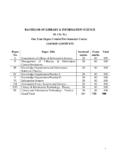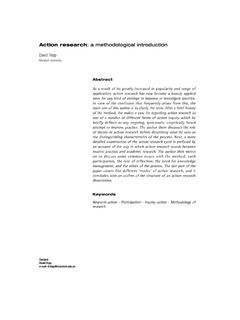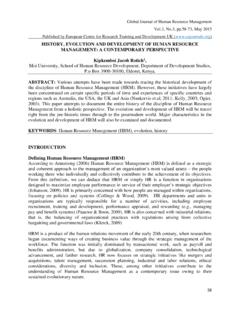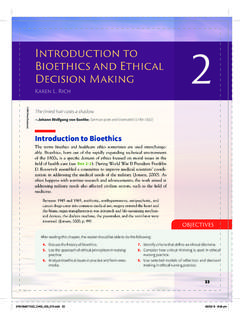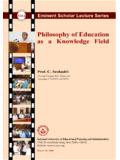Transcription of Binge Eating Disorder: Assessment and Treatment
1 Binge Eating Disorder: Assessment and Treatment Christina Wood Baker, Northampton February 9, 2012 Assessment of Eating disorders Dx: questionnaire + interview Current problems with Eating Eating habits ( , daily patterns, Binge Eating ) Weight/shape control measures ( , food restriction, excessive exercise, laxatives, diuretics, vomiting) Perceptions and feelings about weight/shape, weighing Impairment from ED- physical and psychosocial, SLEEP Development and evolution of problem Weight history and Treatment history Comorbid medical/psychiatric problems, current tx Brief personal history Personal and family psychiatric history, MSE Motivation/ambivalence, attitude towards tx Useful Self-Report Instruments Eating behavior and cognitions EDDS Eating Disorder Diagnostic Scale by Stice provides diagnostic information, 22 items EDE-Q Eating Disorder Exam Questionnaire CIA Clinical Impairment Assessment .
2 Assesses psychosocial impairment from the Eating disorder Assessment of Binge Eating Tricky aspects of assessing Binge Eating Subjectivity of loss of control Subjectivity of large amount of food Grazing all day versus discrete episodes Assessment Objective Binge Episode Subjective Binge Episode Objective Overeating yes no yes no Treatment : Guided Self-Help CBT GSH: Overcoming Binge Eating CBT short group + boosters 8 weekly + 5 boosters Better than waitlist and sustained improvements at 12-month follow-up. Schlup et al, 2009 Treatment : CBT-E Same psychopathology seen across ED dx Similar severity across ED dx Primarily COGNITIVE disorders Over-evaluation of shape and weight and their control CBT-E: focus on currently operating maintaining mechanisms The Transdiagnostic Cognitive Behavioral Theory From Fairburn, (2008) Over-evaluation of shape and weight and their control Strict dieting: non-compensatory weight-control behavior Binge Eating Significantly low weight Events and associated mood change Compensatory vomiting/laxative misuse The Transdiagnostic Cognitive Behavioral Theory Over-evaluation of shape and weight and their control Strict dieting.
3 Non-compensatory weight-control behavior Binge Eating Events and associated mood change CBT-E Principles Formulation guides Treatment Set of hypotheses re: maintaining processes Collaborative empiricism and exploratory questioning Patients learn to de-center and be interested in ED, understand it, become intrigued Therapist provides information, guidance, support, encouragement. Responsibility for change resides with patient. Therapists must be educated in physiological effects of Binge Eating and purging and familiar with body weight regulation, dieting, body image disturbance. CBT-E Contraindications Compromised physical health Suicide risk Severe clinical depression Persistent substance misuse Major life events or crises Inability to attend tx/therapist absence expected Forms of CBT-E Two versions Focused (core Treatment ) Broad Modules addressing clinical perfectionism, core low self-esteem, interpersonal difficulties Two intensities 20-session (BMI over ) 40-session (BMI between 15 and ) Other versions: younger patients Inpatient/intensive outpatient group Temporal Pattern for CBT-E Stage 1: initial session and 1-7 (4 weeks) Stage 2: sessions 8-9 (2 weeks) Stage 3: sessions 10-17 (8 weeks) Stage 4: sessions 18-20 (6 weeks) Goals of CBT BED Behavior change.
4 Normalize Eating Reduce/eliminate Binge Eating (and any purging) Reduce/eliminate strict dieting and avoidance of specific foods Eliminate weight and body checking/avoidance Reduce mood and event-triggered Eating behavior *Weight Loss?? Cognitive change: Reduce extreme shape and weight concerns Reduce perfectionism, all-or-nothing thinking Improve self-esteem Stage 1: Rationale, Regular Eating Detailed Assessment Establish therapeutic relationship Introduction to the model Create formulation Establish regular weekly weighing Psychoeducation (guided reading) Establish regular pattern of Eating Self-monitoring Involve significant others if warranted Formulation Personalized visual representation/diagram of the processes maintaining the Eating problem Initial session Guide for tx targets Credible explanation Feel really bad about my weight and the way I look Diet.
5 Exercise a lot Occasional binges Feel unhappy Example Formulation Feel terrible about my weight and Eating , hate myself Avoid Eating as long as possible during day, no sugar or fat at all Binge Depressed, no one likes me Target Dieting and Rules Feel terrible about my weight and Eating , hate myself Avoid Eating as long as possible during day, no sugar or fat at all Binge Depressed, no one likes me REGULAR Eating Target Mood and Event-Triggered Eating Feel terrible about my weight and Eating , hate myself Can t stop Eating , grazing all day, no structure Binge Depressed, no one likes me REGULAR Eating Binge ANALYSIS: MOOD/EVENTS Rules/Dieting Slip, breaks rule AVE: I blew it Binge Guilt/shame (Purging) Renewed resolve Diet- Binge -Purge Cycle Psychoeducation Diagnosis Health risks and prognosis without Treatment Treatment options Body weight regulation, limitations of control Reward-mood- Eating links (Kessler book, The End of Overeating ) Impact of Binge Eating : shame, $, secrecy, intimacy Types of dieting and possible adverse effects Discuss healthy weight range, normal weight fluctuations, arbitrary nature of weight goals Stage 2: Taking Stock Assess progress Identify barriers to change Fear of change Resistance/rigidity Competing commitments External events/interpersonal difficulties Depression/substance misuse Core low self-esteem Clinical perfectionism Dislike of CBT Review Formulation Stage 3.
6 The Heart of CBT-E Maintaining Mechanisms Event- or mood-triggered Eating Over-evaluation of shape/weight Over-evaluation of control over Eating Dietary restraint Use Formulation Binge Analysis Binge Eating Breaking a dietary rule Being disinhibited Adverse event or mood Under- Eating Binge Analysis Binge Eating Breaking a dietary rule Being disinhibited Adverse event or mood Under- Eating Mood and Eating Explore function of behavior Escape/distraction from emotions Mood modulator Relaxation of control following stress/vigilance Its my reset button Verification of self-criticism, punishment Response to dietary deprivation I want to have EXACTLY what I want I deserve it, a treat or reward Keeps expectations low Help patients deal DIRECTLY with events and moods Motivational strategies, highlight costs of behavior Common Themes Difficulty tolerating emotions Little trust in ability to manage feelings or urges, desires and needs Fear that emotions wont stop and behavior feels like it stops anxiety or anger Self-identity What do I want?
7 What do I need? It is OK to express feelings and needs. How do I express them effectively? Event-Related Eating Find example Sequence of events (behavior chain) Find vulnerable links in chain Teach problem-solving Mood-Related Eating Eating may reduce awareness Eating may neutralize mood Identify sequence Triggering event Cognitive appraisal Aversive mood change Appraisal of mood change/amplification Eating behavior Mood-Related Changes in Eating Occurrence of triggering events Prevent using problem-solving Cognitive appraisal of events Cognitive restructuring and behavioral experiments Occurrence of aversive moods mood acceptance Use of mood modulatory behavior Practice using helpful behavior Put barriers in the way of unhealthy behavior Stage 3 Continued Maintaining Mechanisms Event- or mood-triggered Eating Over-evaluation of shape/weight Over-evaluation of control over Eating Dietary restraint Identifying
8 Over-Evaluation What is important?Weight and shapeFamilyFriendsSchoolMusicOtherStrate gy 1: Enhance Other Domains More slices, bigger slices Weight and shapeFamilyFriendsSchoolMusicNew ActivityVolunteeringStrategy 2: Reduce Importance of Shape and Weight Shrink the green sliceWeight and shapeFamilyFriendsSchoolMusicOtherDietar y Restraint, Rules and Control Dieting = problem Pattern of rigid rules/breaking rules/behavioral response Different types of diets Identify rules and plans for breaking them Food avoidance (systematic exposure) Dichotomous thinking/AVE - I blew it Over-evaluation of Control Address as with over-evaluation of shape/weight Decrease food checking (counting kcals, checking food labels, weighing food) Interpersonal Work Can add life section to sessions, distinct from CBT work Based on Interpersonal Therapy (IPT) Goals.
9 Resolve specific interpersonal problems Improve overall interpersonal functioning Effects take TIME Interpersonal Therapy Brief, time-limited, focused on improving interpersonal functioning 15-20 Sessions over 5 months Group format for BED Social problems and BED Loneliness, lack of perceived social support, poor self-esteem and social adjustment, problems with social problem-solving skills Cycle of interpersonal difficulties, low self-esteem and negative affect, Treatment targets these IPT Group: used as live social network Decrease isolation Formation of new social relationships Models for initiating and sustaining relationships Good retention Interpersonal inventory Assessment Formulation and identification of primary problem area Grief, Role Transitions, Interpersonal Role Disputes, Interpersonal Deficits IPT 3 Phases Initial: identify target problem area(s) Intermediate: work on target problem area(s) Termination: consolidating gains, future preparation Goal-focused Constant focus on the interpersonal context of the patient s life and its link to the ED symptoms Treatment .
10 DBT Aims to reduce Binge Eating by improving adaptive emotion-regulation skills Alternative for patients who don t respond to CBT or IPT Patients with BPD Stanford model for BED has empirical support Single modality group for BED 20 sessions 3 Treatment modules (mindfulness, distress tolerance, emotion regulation) DBT resource New Directions Cue exposure training Decrease responses to food in the environment Toolbox of coping skills to ride out cravings Stare them down Appetite awareness training Improve responses to internal hunger and satiety cues Kerri Boutelle, 2011 References Cognitive Behavior Therapy and Eating disorders , Christopher Fairburn, 2008. Binge Eating : Nature, Assessment , and Treatment . C. Fairburn & Wilson, 1993. Overcoming Binge Eating . C. Fairburn, 1995.

